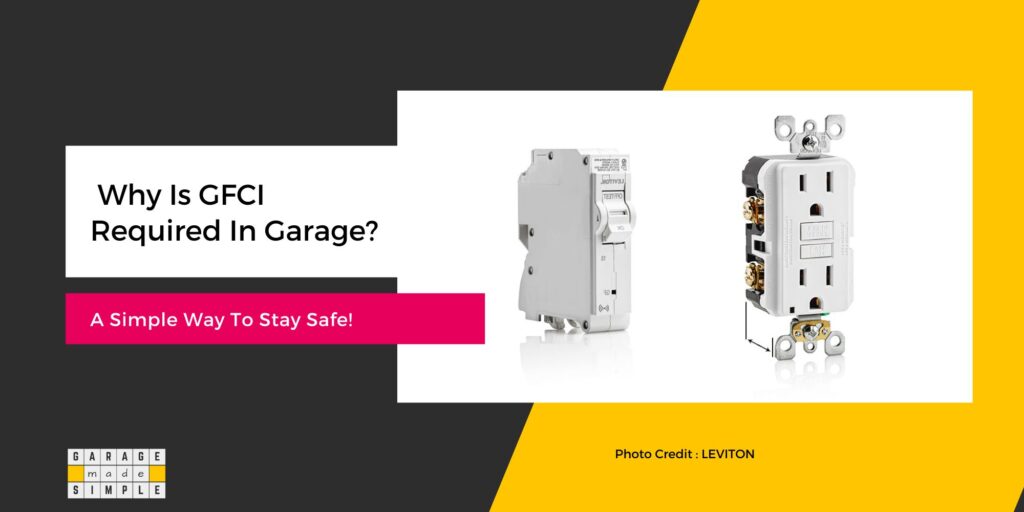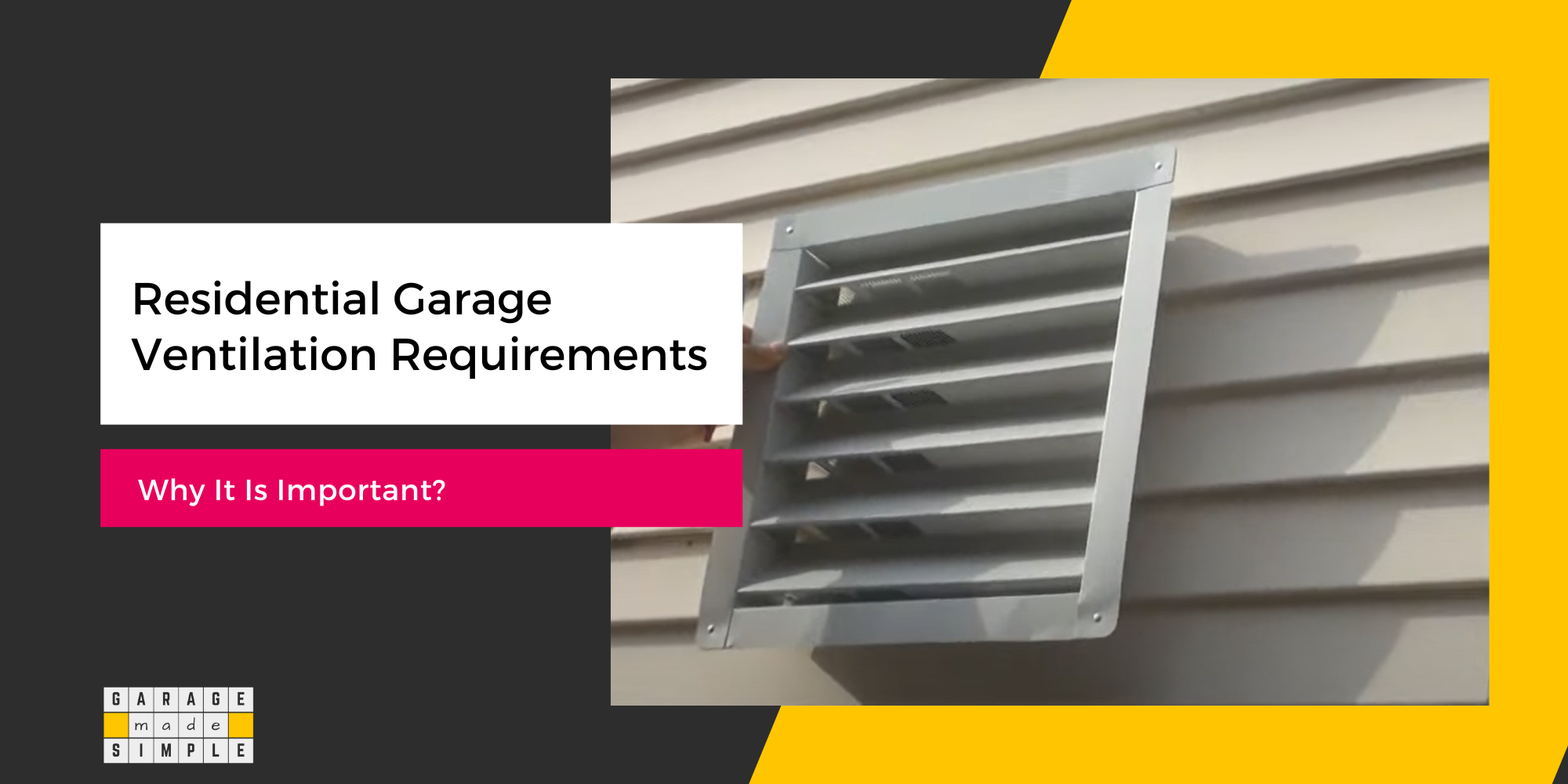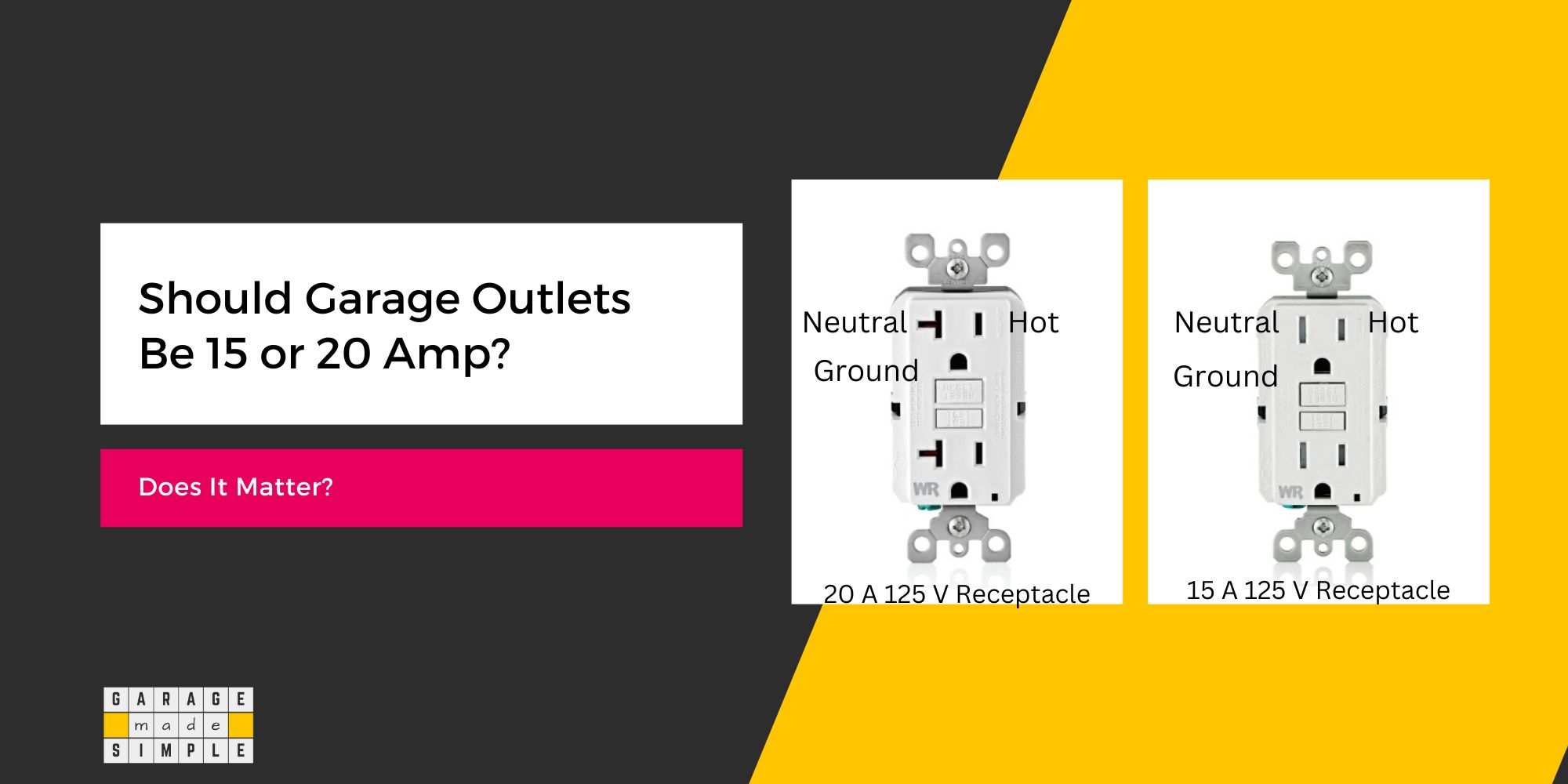Why Is GFCI Required In Garage? (A Simple Way To Stay Safe!)
As an Amazon Associate, I earn from qualifying purchases.
Why Is GFCI Required In Garage?
Have you just completed a new garage and are now in the process of installing the electrical outlets? It seems you cannot go and buy any outlet available in an electrical store or online. The receptacles in your garage must be GFCI protected. But why is GFCI required in a garage?
Both the 2023 National Electric Code (NEC) and the 2021 International Residential Code (IRC) require that all receptacles in a garage must be GFCI. The code has been put in place to keep personnel safe from the risk of electrical shock.
Like most homeowners, you may not be familiar with electrical terminology. Naturally the reason why GFCI is required in a garage is puzzling. It also raises several other questions.
In this post I explain the meaning of GFCI as well as when, where and why GFCI outlets are required. I answer questions regarding the code for GFCI in a garage and how to replace a non-GFCI outlet in a garage with a GFCI outlet.

The information provided in this post will be extremely useful for purchasing the right products and ensuring the correct installation procedures.
The electrical work in your garage should be done by a qualified electrician. However, you could do it yourself too, provided you follow the basic safety precautions that must be taken when working with electricity. A section in the post covers that aspect.
So, What is GFCI, Anyway?
GFCI is an abbreviation for Ground-Fault Circuit-Interrupters.
GFCI enabled receptacles and branch circuits shut down the circuit in case of any ground fault. A GFCI uses a current transformer to detect the difference between the line current supplied to the load and the neutral current returning from the load.
Class A GFCI trips when the current to ground has a value in the range of 4 milliamps to 6 milliamps, and references UL 943, the Standard for Safety for Ground- Fault Circuit-Interrupters.
UL SOLUTIONS
GFCI vs Fuse
Before GFCI, installing a fuse was a way for protection against electrical accidents. The fuse could be installed in an appliance, breaker, subpanel or on the branch circuit. The fuse blows off if there is a short circuit and the current level increases.
A fuse eliminates the risk of an electrical fire. However, a fuse does not and cannot prevent electrical shock.
The GFCI, on the other hand, is designed to shut off the circuit instantaneously when the current leaking to the ground exceeds 6 milliamps. This protects personnel from risk of electric shock.
When Are GFCI Outlets Required?
GFCI outlets are required by code whenever the electrical outlet is in an environment which is humid, damp or wet. Some locations where GFCI outlets are absolutely required are kitchen, bathroom, laundry room, basement, garage, etc.
In the 2008 revision of NEC the use of GFCI outlets in the garage was included in the code. Of course the latest version, which is the 2023 NEC incorporates the requirement of GFCI outlets as per section 210.8.
What Is Code for GFCI Outlets in Garage?
2023 National Electric Code (NEC)
Section 210.8 of 2023 National Electric Code (NEC) Ground-Fault Circuit-Interrupter Protection for Personnel
Ground-fault circuit-interruption for personnel shall be provided as required in 210.8(A) through (F). The ground-fault circuit-interrupter shall be installed in a readily accessible location.
For example, Section 210.8 (A) Dwelling Units states
All 125-volt, single-phase, 15- and 20-ampere receptacles installed in the locations specified in 210.8(A)(1) through (11) shall have ground-fault circuit-interrupter protection for personnel.
The locations listed (not verbatim) are:
- Bathrooms
- Garages & Accessory Buildings
- Outdoors
- Crawl Spaces
- Unfinished Basements
- Kitchens
- Sinks
- Boathouses
- Bathtubs or Shower Stalls
- Laundry Room
- Indoor Damp & Wet Locations
As you can see the list of where GFCI compliance is required includes the garage.
2021 IRC CODE
E3902.2 : Garages & Accessory Building Receptacles states
125-volt through 250-volt receptacles installed in garages and grade-level portions of unfinished accessory buildings used for storage or work areas and supplied by single-phase branch circuits rated 150 volts or less to ground shall have ground-fault circuit-interrupter protection for personnel.
What is the Difference Between GFCI and AFCI?
GFCI is an abbreviation for Ground-Fault Circuit-Interrupters whereas AFCI is the abbreviation for Arc-Fault Circuit-Interrupters.
In layman terms, a GFCI outlet or breaker protects human beings against electric shock and possible electrocution. On the other hand an AFCI outlet or breaker trips when it detects electrical arcing faults and prevents electrical fires.
AFCI also saves human lives and property, but by preventing electrical fires.
Each type of protection is available as a breaker (protects the entire circuit) or a receptacle (can also protect downstream of the receptacle if load side is connected downstream).
Generally, you want to install an AFCI as a breaker but a GFCI as a receptacle.
NEC Code for AFCI
AFCI protection must be installed in a readily accessible location and must be provided per Sec. 210.12(A), (B), (C), and (D):
(A) All 15A or 20A, 120V branch circuits supplying outlets in dwelling unit kitchens, family rooms, dining rooms, living rooms, parlors, libraries, dens, bedrooms, sunrooms, recreation rooms, closets, hallways, laundry areas, or similar areas.
The need for AFCI protection for a garage is not specified but the term “similar areas” can be interpreted to include garages. Check out my post Do Lights in a Garage Need AFCI? (Best Practice Explained!).
Are my Outlets GFCI Protected?
If you have bought a new house which has a garage and all the electrical outlets have already been installed, then you may wonder if the outlets are GFCI compliant or not? So how can you know? It is actually quite simple.
GFCI protected outlets differ from the non-GFCI outlets in a garage as they will have two buttons “test” and “reset” on them.
What can you do if you find that you have some (or possibly all) non-GFCI outlets in your garage? You must replace the non-GFCI outlets to GFCI outlets in your garage. GFCI receptacles are required in a garage for code compliance and for your own safety.
Can You Install GFCI Receptacles Yourself?
Yes you can install GFCI protected outlets yourself by replacing the existing non-GFCI outlets in the garage. In the next section I will explain the step-by-step process for doing that.
However before you embark on any electrical work in your garage or home you must ensure to follow the basic minimum safety procedures as given below:
DISCLAIMER: What Is the Safest Way to Handle Electrical Wires?
This post is for information only. I strongly recommend that all electrical work should be entrusted to licensed professional electricians. In case you do decide to do some of the work yourself, make sure that:
“Treat all electrical wiring, even “de-energized” ones as if it is live, unless it has been locked out and tagged”
You must follow the basic safety guidelines:
- Use protective eyewear, especially when drilling or grinding metal
- Wear insulated rubber gloves when working on any circuit or branch circuit
- Always use insulated tools while working with electricity
- De-energize the electrical wires on which you will be working. Tag the circuit breaker to prevent someone from switching it on accidentally
- Electrical wiring in wet or damp locations or underground must be within a PVC conduit
- Underground wiring conduits should be at least 18 inches below grade as per code
- All receptacles for equipment that could be in wet or damp locations should be equipped with Ground Fault Circuit Interrupter (GFCI)
- Never use old frayed cables, damaged insulation, or broken plugs
- High-voltage equipment should be properly grounded to ensure electricity flows directly to the ground and not through the person in contact with the live wire
How to Replace a Non-GFCI Outlet in a Garage to a GFCI Outlet?
De-energize the Outlet to be Replaced
You can do this by inserting an outlet tester in the outlet that is to be replaced. The indicator light will glow since the outlet is energized. Now go to the circuit breaker box and turn off the corresponding circuit.
If the indicator light on the tester stops glowing you know that you have successfully de-energized the outlet.
Remove the Existing Outlet
Using a screwdriver unscrew and remove the existing, old outlet from the electrical box.
Remove the Connecting Wires
Check how many wires are connected to the outlet. Normally there should be three. Get an electrician if the number is more than three or less than three.
Disconnect the “hot” wire first. This is the one on the right side and will be red or black in color. Next, disconnect the “neutral” wire. This is the one on the left side and will be white in color. Lastly, disconnect the “grounding” wire which is green in color.
Replace with GFCI Outlet
Connect the wires to the new GFCI outlet in the reverse order. So, start by connecting the green grounding wire first. Next, connect the white neutral wire to the left side with the silver screws. Lastly, connect the red or black hot wire to the right side with the brass or gold screws.
Double Check the Connections
Make sure that the connections are neat and tight. It is very important that there is no cross connection. Non insulated wires should never touch each other.
Test & Reset
Screw the outlet into the box. Replace the outlet box. You can now switch on the power.
Push the “test” button and then push the “reset” button for electricity to begin flowing.
Test the GFCI Outlet
To test the outlet to make sure that it is working as a GFCI outlet, insert the outlet tester in the outlet. The indicator light will confirm that electricity is flowing.
Now push the “test” button on the GFCI outlet. The “test” button mimics a ground fault and should cause the GFCI outlet to shut off the power.
If the indicator light goes off then it means that the GFCI outlet is de-energized, as required. Push the “reset” button and you are good to go
FAQ
Does a Garage Door Opener Need to Be on a GFCI?
Till the 2008 NEC revision, a garage door opener receptacle was not required to be on GFCI.
The thinking before 2008 was that the receptacle was not easily accessible. It was considered out of reach of personnel as they went about their daily chores. As such it was not considered necessary for a garage door opener receptacle to be GFCI protected.
However, in the 2008 NEC revision it was decided that all receptacles in the garage need to be GFCI compliant. A stricter, but safer, code requirement!
Therefore as on date a garage door opener and its receptacle needs to be GFCI protected.
Do Ceiling Outlets Have to Be GFCI-Compliant?
The case of ceiling outlets is the same as garage door opener outlet. So the answer is also the same.
Do Lights in a Garage Need to Be GFCI?
Garage lights need not be GFCI compliant provided they are hardwired.
Hardwired garage lights do not connect to a receptacle. As such GFCI compliance has no relevance.
However if you have garage lights that need to be plugged into a socket then, of course, the socket must be GFCI compliant, irrespective of how high or low the socket is on the garage wall or ceiling.
Thank you very much for reading the post. I do hope you found it informative and useful.






